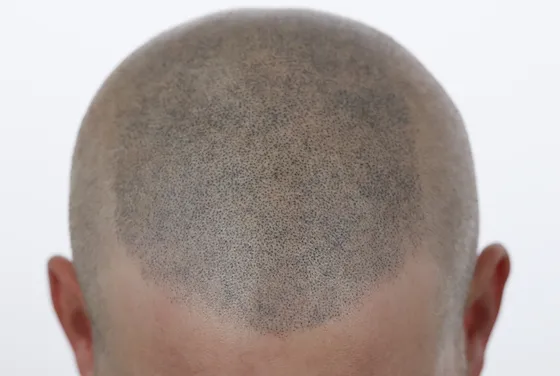Scalp Micropigmentation (SMP) has become an increasingly popular solution for hair loss. It’s a fantastic option for those looking to restore the appearance of a full head of hair or a defined hairline. However, not all SMP is created equal. The quality of SMP can vary widely depending on the skills and techniques of the practitioner, as well as the tools and pigments used. Let’s dive into the characteristics of good and bad SMP and how to spot the difference.
Bad SMP will have dots that are either too large or inconsistently placed, creating an uneven, fake look. This is often due to a lack of technical training or improper equipment. Large dots can look more like polka dots on the scalp rather than natural stubble. SMP that’s too dense or lacks proper spacing can also appear unrealistic, giving a painted-on appearance.
4. Hairline Design
Good SMP results in a natural hairline that complements the client’s facial structure, age, and personal style. A skilled artist takes the time to understand the client’s preferences and creates a hairline that suits their personality while looking authentic.
Bad SMP often has a poorly designed hairline, either too sharp, too straight, or too low, which can make the treatment look unnatural. If the hairline looks unnatural or out of place, it’s often a red flag that the artist didn’t take the time to customize it for the client.
5. Training and Experience
Good SMP is typically done by a certified, trained practitioner with years of experience. SMP is a skill that requires both an artistic eye and a thorough understanding of skin and pigment science. Professionals who invest in continued training and who stay updated on new techniques can deliver consistently high-quality results.
Bad SMP is more often the result of insufficient training or a lack of experience. Untrained artists may not understand how to adjust their technique for different skin types, pigment retention, or aging. Checking an artist’s credentials, certifications, and portfolio is crucial when considering SMP treatment.
6. Client Reviews and Before-and-After Photos
Good SMP artists typically have a strong portfolio of before-and-after photos and positive client testimonials. They’re transparent about their results and proud to showcase their work. A portfolio should show different angles, clear close-ups, and consistent results across multiple clients.
Bad SMP artists might have a lackluster portfolio, often with limited images or photos taken immediately after treatment (which can hide imperfections that appear during healing). Avoid artists who hesitate to share their work or who lack detailed images of healed results.
How to Find a Quality SMP Artist
When researching SMP, here are some steps to find a quality artist:
- Ask for Credentials: Look for certified practitioners who have trained specifically in SMP.
- Check Their Portfolio: High-quality before-and-after photos tell you what to expect.
- Read Reviews: Real client experiences can offer insight into the artist’s skill level and professionalism.
- Request a Consultation: An experienced artist will offer a consultation to discuss your goals and assess your needs.
- Look for Specialization in SMP: Artists who specialize in SMP and have years of experience tend to have better results and an eye for detail.
Final Thoughts
SMP is a craft that requires precision, artistry, and technical expertise. When done well, SMP can transform the look of someone experiencing hair loss, providing a natural, confidence-boosting result. By knowing what to look for and understanding the signs of good versus bad SMP, you can make an informed decision and ensure you’re getting the quality treatment you deserve.
Choosing the right artist is a critical step on your SMP journey. A bit of research and a careful selection process can make all the difference between a look you’ll love and one you’ll want to correct.

